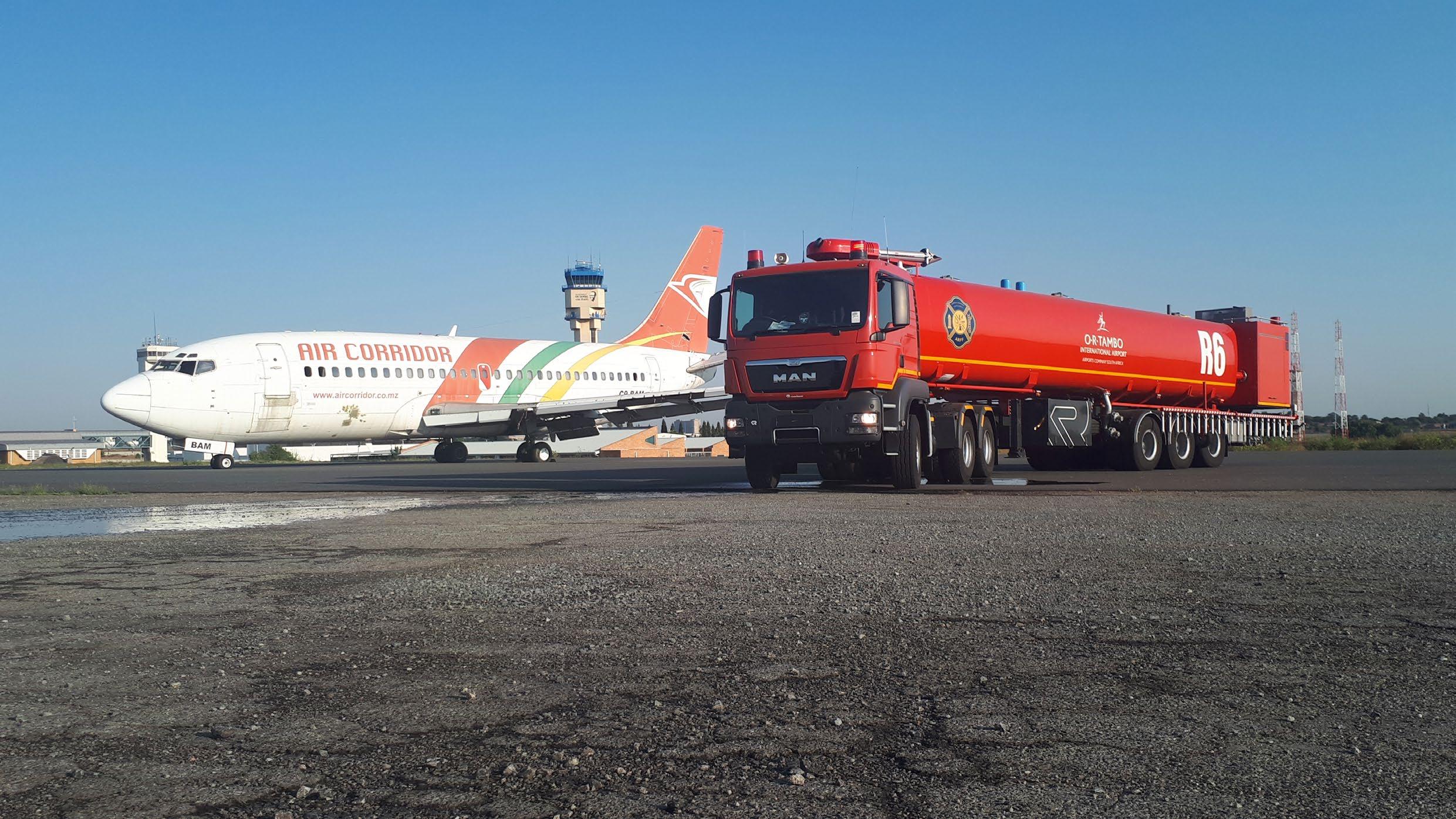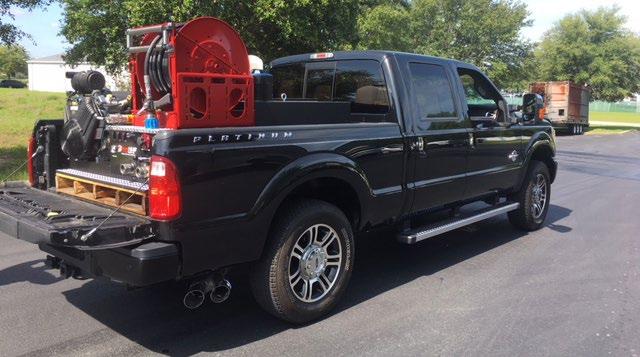
8 minute read
Lessons learnt in ICS to be implemented
By Michelle Kleinhans, managing director, Dynamic Incident Management
Memory is good but short. A lesson learnt, needs to be a change in personal or operational behaviour as a result of the experience that should be considered in future operations or response. Yes, collecting and disseminating lessons learned helps but: • What about applying them? • Important enough to be communicated and re-applied?
Advertisement
The only way to avoid problems happening again, is to carefully consider what went wrong at the time and why; then decide what can be done differently next time to avoid the problems/issues. It is important to understand that lessons learnt should be implemented not only upon responding or during incidents but before responding or deploying resources. It is called preparedness.
Let’s look at some lessons learnt in implementing the incident command system (ICS) before during and after incidents. Activate the ICS structure from the start of an incident!! No matter how small the incident, there must always be an incident commander (IC), this is the start of forming the ICS structure. Remember an incident commander cannot do all the work on his/her own. One cannot just do one training course and think you know how the system operates and implement the structure the way you think it should be. It is important to understand the situation and know when to activate ICS positions as the incident escalates. Take notice of when the incident is escalating into an extended attack and plan the structure needs to grow with the incident.
The incident commander (IC) The incident commander (IC) must have full authority (delegation of authority) to make decisions and has full accountability at the incident. A lack of understanding of this concept during incidents is evident in our country. The IC must draw on trained, qualified and experienced people to build the ICS structure. People tend to use people they know ie friends, instead of using people that are more qualified to fill the positions. It is important to not change IC’s per shift. It is confusing and contributes to regular change of tasking to ‘suit’ the new IC’s view of the situation, instead of continuing with the current plan. Unified command is seldom used and can make a major difference during an incident.
The incident command post (ICP) The incident command post is not the same as an emergency operations centre (EOC). The incident command post is where the incident commander and his/her incident management team (IMT) manage the incident from. Also, it is not a place for gatherings or where people walk in and out from. The incident command post should allow for each section activated, to have their own room for operations. The incident commander should have his/her own space and meetings need to be held in a separate room and not within the sections, so that people can continue to work. Briefings should preferably be held on the outside of the incident command post or at a camp, as to avoid cramping into one small room.
ICS structure The ICS structure complements the incident needs and requirements. It is important to fill the required ICS positions using skilled personnel. A section chief, who does not understand his/her role and responsibilities, should not be appointed. An incident is no place to do in-house training; activate a trainee position without the responsibility of the actual position for training purposes. Activate unit leaders; one person cannot do all the work.
ICS positions ICS positions should never be combined. Only the incident commander can fill all positions at once if he/she does not activate
BEYOND FIRST RESPONSE

Dynamic Incident Management is a LG SETA accredited Training Service Provider and specialise in Integrated Incident/Event Management.
The importance of having trained, competent and prepared response capability from First Response to complex incident/ event management personnel is vital in all agencies for effective and efficient incident and resource management.
OUR TRAINING AND SERVICES INCLUDES:
INCIDENT COMMAND SYSTEM (ICS)
• Basic to Advanced ICS (I-100 to I-400) • Position Specific (All levels) • Incident Management Teams (IMT) • Emergency Operations Centre (EOC) • Control Room Operators/Aviation Dispatch (Expanded Dispatch) • On Line Incident Command System (per registration – from Mid April 2018)
FIRE SUPPRESSION AND MANAGEMENT
• Wildland Fire Fighting Training (Basic and Advanced) • Fire Safety (Awareness, Fire Safety in Buildings and Lodges) • Prescribe Fire Operations • Fire Weather • Wildland Fire Investigation • Leadership for the Wildland Fire Officer • Tactical Radio Procedures and Base Radio Operators License
• Basic Communications and Office Etiquette • NLP Life/Work Coaching • Leadership Programme
• Training and Fire and Rescue Equipment packages (Wildland Fire and Structural Fire) • Establishment/upgrade of Fire Emergency Service (Including Wildland Fire Services) • Established and trained Incident Management Teams
SKILLS DEVELOPMENT
INTEGRATED ALL HAZARDS SUPPORT SERVICES ICS 100 AND 200 NOW AVAILABLE ONLINE
DYNAMIC INCIDENT MANAGEMENT (Pty) Ltd
All Hazard Integrated Incident/Event Management Training
Michelle Kleinhans
the specific position. The section chief can fill the unit positions if not activated by them. Critical positions such as logistics cannot be used to check in resources, which is part of the planning section’s responsibility. There is a reason for each position with a specific role and responsibility; to combine or cross the role and responsibility is asking for unclear instructions and communications.
Incident management teams (IMT) It is all about span of control! An incident management team (IMT) means trained, qualified and experienced people that support the operations during an incident, not vice versa. One does not just put people in positions to form a team. ICS is about position, not rank. IMT members do not necessarily need to be from one organisation, if they understand the incident command system and the roles and responsibilities, the person can work within any IMT. The use of local experts can strengthen the incident management team’s work and outcomes. Regular incident management team training will ensure that each member is still current within the position. There is a need in South Africa for a national IMT database.
Use of the planning process Without following the planning process the only thing that continues is chaos management. Implement the process should not be as we like it to be but rather it needs to follow the ICS formal planning process. Meetings and briefings during the process is not a time for ‘catching up’ with friends. Operational period briefings are formal briefings where tactical supervisory personnel receive operational instructions and should be formal and timely.
Standard terminology and forms The use of standard incident action plan forms and other relevant incident forms is critical on all incidents. Refrain from using your company forms or what you feel is relevant. Resource typing is critical on any incident and need implementation.
Incident action plans (IAP) Incident action plans (IAPs) are done before the start of the operational period, not after. There should be an incident action plan per operational period and each supervisory personnel must receive an IAP during the operational period briefing. The IAP becomes a legal document at the end of the incident and should be filed and kept. Proper completion of each form of the IAP is critical and the incident commander should ensure that IAPs all are completed and signed off. The IC on final signing off the IAP confirms that all is correct and ready for implementation. The accountability lies with the incident commander.

Checking in and tracking of resources One cannot put enough emphasis on checking-in and tracking of resources. The incident command system uses a T-card system, which is visible and easy to read. Electronic resources tracking should be used for record purposes not as the only tracking system. All resources, tactically and functionally, must check in; this will help with volunteers just arriving to check on qualifications before tasking.
Communication Integrated communications are critical for successful communications. WhatsApp cannot be the main communications method tactically but it is a good back-up system. Each division or group must have their own channel and not everybody should have a radio. Air communications should be done through a licensed person and not used by everybody. Public information during the incident is critical. The more information provided, the less calls will be received; not only via radio, television or newspapers but regular updates on community billboards will give calming information to the public. Social media must be controlled; difficult but possible for all incident personnel and resources.
Incident identification Resources arriving at an incident must go through check in and should receive an incident call sign and not use their own call sign for the incident. Vehicles, crews and single resources should receive a colour tag to confirm official check-in and tasking were received. IMT members should wear the same PPE ie shirt with position identification; different uniforms should be avoided.
Incident resources, camps and staging areas Check-in is a must when arriving at incidents, camps or staging areas. Activate proper camps for resources to allow for relieve resources to be housed and rested to continue working. This will also allow for more control of resources. A camp should not be used a staging area. Allow for enough relieve resources during larger incidents; don’t wait until needed.
Transfer of command Formal transfer of command should take place and everybody should be informed of the transfer of command. Stick to the current plan; do not just change it to suit your needs as new incoming supervisory personnel.
Demobilisation Demobilisation is not an on-thespur-of-the-moment task. Allow enough time for demobilisation orders. Proper check-out and tracking need to happen. Implement demobilisation plans and debrief resources before demobilisation.
Formal debrief The formal debrief not is not an opportunity for a finger-pointing session. The formal debrief is critical for lessons learnt and must be attended by all IMT members and supervisory personnel, not just decision makers and political leaders; it is not about the who but the what. The incident commander should not chair the debrief; it should be chaired by a person who was not










